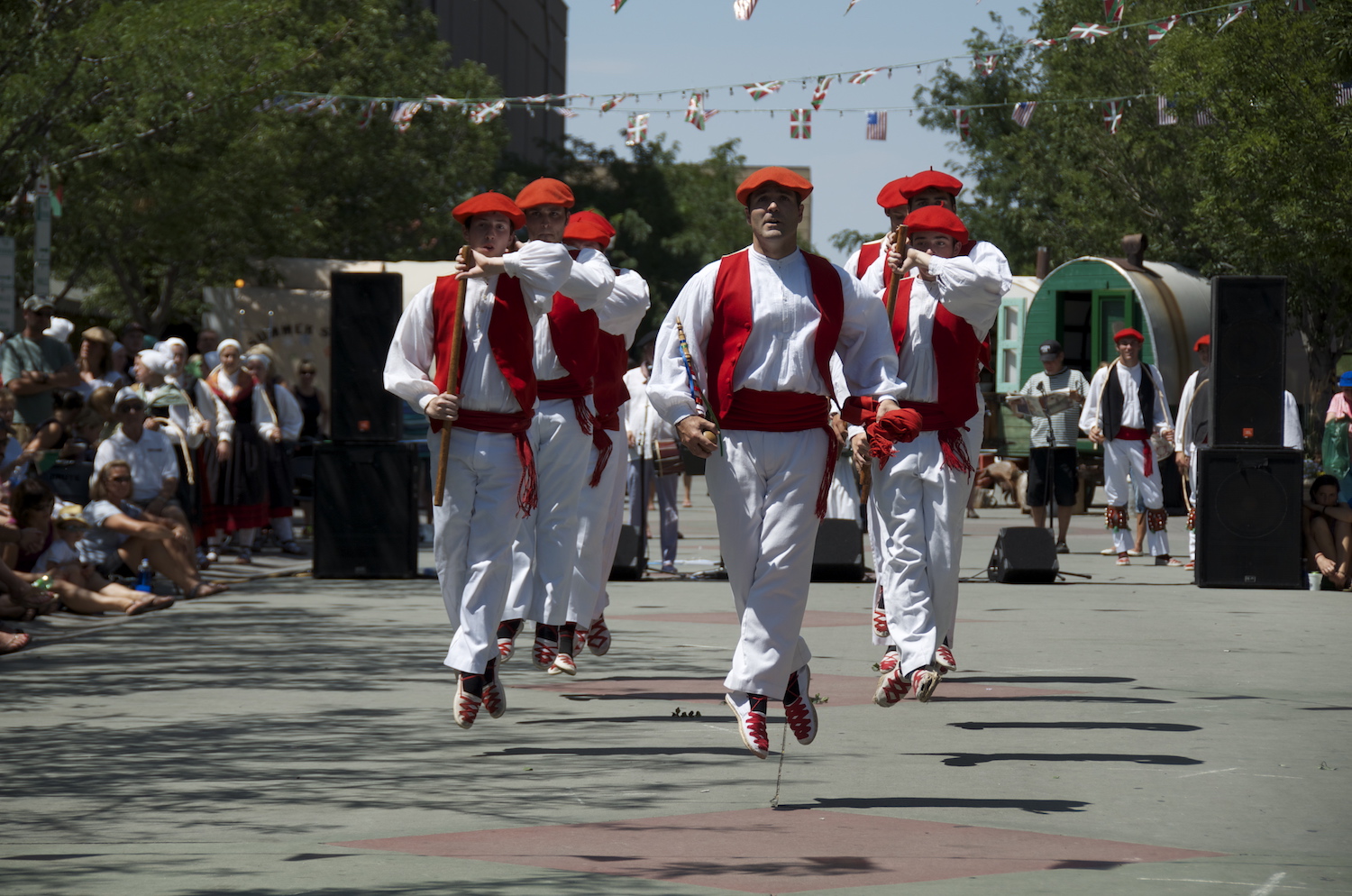Of Pintxos and Kalimotxos--The San Inazio Way
Tony Eiguren lifted a bottle of Bereziartua Basque cider above his head and let a stream of honey-hued liquid splash into a thin glass on the table. The cider, ever so slightly effervescent, gave off a pungent waft of sour apple that was even more puckering when it hit the tongue.
“It seems to be one of those things where you’re really into it and you love it or it’s like, ‘Oh, it’s too much like vinegar, not so much into it,’” said Eiguren, co-owner of The Basque Market. “It’s hit or miss, so I don’t know if it’s in your genes.”
To celebrate the annual San Inazio Festival just yawning to life outside the Basque Market in late July 2013, Eiguren hosted a Basque cider tasting complete with traditional cider house tapas or pintxos, including seared steak, tortilla española with caramelized onions and manchego with membrillo quince paste.
Across the street through the Basque Center’s flower-draped front doors, members of Boise’s Basque community were also celebrating the first night of San Inazio, a local three-day festival honoring St. Ignatius of Loyola, the patron saint of the Basques and founder of the Jesuits.
During Friday’s Friends and Family Night, festival-goers bring a variety of homemade pintxos to the Basque Center and share them buffet-style. In the nearby Fronton building, athletes compete against one another in paleta goma, a Basque handball game, which is simulcast on a large screen in the Basque Center.
While Friday tends to be the most low-key night of the festival, Basque folk dancers kick into gear Saturday afternoon with their fancy footwork. Clad in white slacks, red sashes, billowing red skirts and nubby white socks, the Oinkari Basque dancers flood the Basque Block, swirling through traditional Basque folk dances like the jota.
Later that evening, while many are gathered at St. John’s Cathedral for mass, a line of famished festival-goers grows steadily in front of a food stand across from the Basque Center. In exchange for tickets, volunteers hand over thick chorizo sausages, lamb sandwiches dripping with jus and baskets of crisp croquetas concealing creamy interiors.
According to Basque Center bar manager Julian Lete, volunteers spend the week prior to San Inazio preparing thousands of those handmade croquetas — small, fried balls of creamy béchamel flecked with meat, similar to French croquettes — and hundreds of pounds of pork solomo and lamb in the Basque Center’s basement kitchen. All of the profits made at the stand throughout the festival benefit the Basque Center.
“Basically you can make croquetas with anything,” explained Lete. “In the restaurant business anything that you have left over — whether it be fish, pork, chicken, beef, hamburger — you can utilize that in making croquetas because it’s basically just a béchamel that’s thickened up.”
Another festival favorite is the pork solomo sandwich.
“The solomo is just the backstrap, the pork loin,” said Lete. “So they marinate it with a choricero pepper and garlic. They’ll marinate it in that for generally three to four days and then they just slice it up and grill it.”
And no street fair would be complete without libations. The Basque Block bars serve their booze in plastic cups so partiers can cart their drinks onto the street, where Basque bands like Amuma Says No rock out into the wee hours. The most puzzlingly popular drink during the festival is the Kalimotxo, a mixture of cheap red wine and cola. Lete says the Basque Center goes through 20 cases, or 400 Liters, of boxed red wine throughout the weekend.
“The history of the Kalimotxo is that in the wine region in the Basque country, somebody, when they made their wine, they didn’t have a good year. By happenstance somebody added Coke to it and it tasted really good, so hence Kalimotxo,” said Lete. “So, you never make Kalimotxos with a good wine, you always make Kalimotxos with the bottom of the wine list. … It makes the wine taste better.”
Once red-eyed attendees have shaken off the Kalimotxo blues Sunday morning, the final day of San Inazio heats up at Municipal Park with more pintxos and games.
“We have the picnic so everybody meets at around 10 a.m. and then in the afternoon around 2 p.m. they have all the games — so they’ll have gunnysack races and tug-of-war, jota contests, also weightcarrying contests,” said Lete. “Following that, Sunday evening, we have another street dance.”
Whether you opt to hit up the Basque Block’s Kalimotxo stand one last time, or stick to less lethal beer and Basque cider, plan to spend the rest of the evening relishing the wrap-up of Boise’s annual three-day salute to Basque culture. And steel yourself for 2015, when San Inazio transforms into the far more massive international Basque jubilee, Jaialdi.
The Basque Market | @thebasquemarket
San Inazio Festival
Basque Center | @basquecenter














